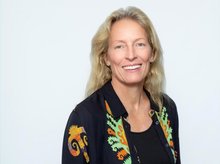Shona Brown joined Google’s executive team in 2003. She served in the capacity of SVP of Business Operations until 2011, when she transitioned to a role leading Google’s technology for social impact efforts. In January 2013 she moved into an advisory role with the company. Currently, Dr. Brown is serving as an independent board member for a portfolio of private technology start-ups. In addition, she serves on the board of directors of PepsiCo and Atlassian Inc. In addition to CASBS, she is also a board member of several non-profit organizations including The Nature Conservancy, The Knight Foundation, and Code for America. Prior to joining Google, Dr. Brown was a partner at McKinsey & Company, where her focus was working with technology companies on growth strategy and portfolio transformation. She is the author of Competing on the Edge: Strategy as Structured Chaos, which introduced a new strategic model for competing in volatile markets. She has a bachelor’s degree in computer systems engineering from Carleton University in Canada, an M.A. in economics and philosophy from Oxford University (which she attended as a Rhodes scholar), and a Ph.D. from Stanford University’s Department of Industrial Engineering and Engineering Management.
Now in her second three-year term, she joined the CASBS board of directors in 2014. We did a Q&A with Shona to learn a bit more about her.

CASBS: Since 2012 when you finished your tenure at Google we understand you have been acting as an advisor and board member for a variety of corporate and nonprofit entities. How do you choose which organizations to get involved with and how did CASBS make the cut?
Shona Brown: I have found I can be most helpful to organizations - whether public or private corporations, non-profits or philanthropic foundations - that have growth aspirations and transformational agendas. My experience from my decade at Google is useful to leaders of organizations as they wrestle with complex strategic decisions as well as operational issues related to scaling their organizations and their impact. I gain fulfillment by helping others lead their organizations better. So when Margaret asked me to join the CASBS board I found her aspiration for growing CASBS’s impact compelling and I thought I might be able to help in some small way.
C: We note that one of your doctoral advisors at Stanford was the great James March, a giant in the field of organizational decision making and behavior, as well as a two-time CASBS fellow (1955-56, 1973-74). Did you first learn about CASBS from March?
SB: My memory of 30 years ago is a little rusty, but I can tell you that at the time I was a Research Assistant for Jim March and a Teaching Assistant for Bob Sutton [a CASBS fellow in 1986-87, 1994-95, 2002-03]. Both of whom graciously agreed to be on my dissertation committee and both of whom I remember being vocal supporters of CASBS. So I would credit them both with introducing me to CASBS. I also recall that I had lunch at CASBS a couple of times during those years. And I remember how appreciative I was of the civilized lunch as a graduate student, but sadly I cannot remember who invited me to lunch!
C: To whom do we give credit for reintroducing you to CASBS three decades later and recruiting you to join its board of directors?
SB: The incomparable Roberta Katz. [Katz is CASBS board vice-chair and a longtime CASBS research affiliate.]
C: You lead the Center’s Academic Advisory Committee (AAC), which is tasked with identifying multi-year projects CASBS will undertake as well as steering and guiding projects once they are launched. What interested you in taking this important assignment?
SB: The committee is a terrific opportunity to engage more deeply in the substance of the research work that CASBS makes possible. While no longer a part of the Academy, it permits me the pleasure of dipping my toe into that world. I learn something new and interesting at each meeting.
C: You’ve also appeared as a guest speaker for the last three years at the Center’s summer institute on “Organizations and Their Effectiveness”, co-directed by Bob Gibbons and Woody Powell. What leads you to continue participating?
SB: I find the concept of what Bob and Woody are trying to do extremely compelling. The idea that the newer generation of organizational scholars would benefit from an interdisciplinary grounding regardless of their area of research focus makes complete sense to me. Broadly our conversations compare my real world experiences of an “effective organization” with the participants’ theories and models. There is overlap, but also many gaps between the ‘real world’ and the attempt to accurately describe it in organizational research. I get to learn a little about current research trends and hopefully the participants gain some insight from my ‘real world’ experiences that is useful to their research.
C: Finally, we take note that a number of furniture items come in a color called “Shona Brown Sugar.” Look it up. Do you know about this?
SB: Actually I did not know this. Which just goes to show that every day should be viewed as an opportunity to learn something new!
